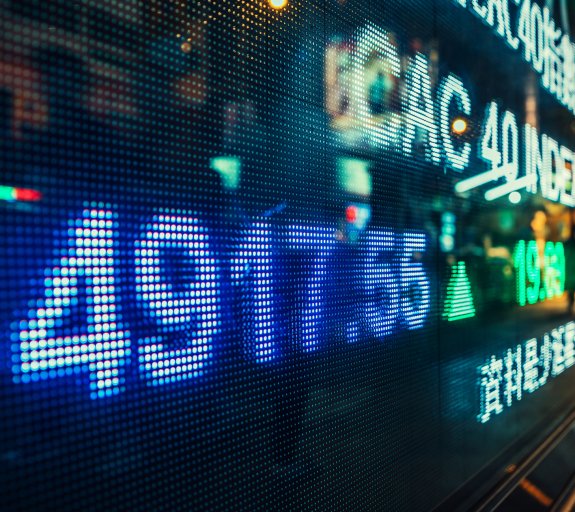
In shock news, bond returns turn positive!
The price of the benchmark 30-year US Treasury bond has risen 6.8% since 14 June. It hasn’t gone down even in the wake of the release of a 9.1% inflation number for June and the increased prospect of the Federal Reserve hiking rates by a full percentage point on 27 July. Short-term, fixed income returns are beating inflation! The downswing of the inflation cycle, when it comes, will provide more opportunities for investors to see asset prices rise. It’s a question of timing and patience and understanding where to be positioned for the re-emergence of long-term positive real returns.
Inflation peak not yet reached
The June consumer price inflation data in the US was a disappointment to those looking for a potential peak in the inflation cycle. The headline annual rate came in at 9.1%, up from 8.6% in May. Core inflation in the US was 5.9%- down from the 6.5% peak seen in March. The difference is, of course, food and energy. High food and energy prices are lifting inflation everywhere (Ireland reported a June inflation rate of 9.6% and in Italy it was 8.5%). Upstream there is some relief. Global agricultural commodity prices have fallen over the last three months while Brent crude oil has fallen below $100 per barrel after reaching $117 in mid-June. Conditional on how much these declines in commodity prices will be reflected in retail prices of energy, gasoline and food, there is a chance that headline rates of inflation will come down in the next couple of months.
It gets everywhere
This would be welcome, but it wouldn’t be the end of the story (and yes, it has been said in advance of the last few inflation releases and they have all surprised to the upside!). Inflation is turning out to be more persistent than expected and is impacting all economic behaviour. Higher costs for raw materials, energy, transportation, and labour are cutting corporate profit margins. Companies facing higher costs try to raise their selling prices. Politically, this dynamic is being felt most keenly in goods that consumer but most often, thus driving home the perception that the cost-of-living is spiralling out of control. In turn, higher wages are being demanded and the exceptionalism being displayed by some worker unions’ demands for higher pay, runs the risk of cementing a wage-price spiral “if train drivers are demanding an 8% rise, why can’t I?”
Short-term or long-term hit to prosperity
The process of bringing inflation down will take a while. Central bankers – who are the special teams in terms of inflation control – are raising interest rates to reduce aggregate demand. They are able to do this because debt is so much a part of modern economies that most economic agents have to devote some part of their cash-flow to interest payments. The more income is devoted to interest payments, the less is available to spend. Spending falls and one person’s spending is another person’s income. The trade-off for policy makers is to create the situation in the relatively short-term whereby there is an economy-wide hit to real income (slower aggregate demand growth with the associated loss of employment) or accept that inflation will reduce real incomes over the long-term. Take the income and wealth hit upfront or accept that long-run prosperity will be undermined.
The 100 club
To trigger the inflation circuit breaker it seems more and more likely that interest rates will need to go up more aggressively than seen so far. The Bank of Canada led the way this week with a 100 basis points increase to its key policy rate. The combination of this move and the inflation data has raised market expectations that the US Federal Reserve (Fed) might do the same at its 27 July meeting. That would put the Fed Funds rate at 2.75%. A repeat move in September would meet most economists and market participants’ expectations of where the rates will peak in this cycle.
Lower headlines and changed behaviour
A 3.5% interest rate would slow the US economy. Lower global commodity prices should slow inflation. There is a bit of clutching at straws here but the average monthly increase in the core CPI in Q2 2022 was less than it was in Q2 2021 (0.63% vs 0.8%). Typically, Q3 sees lower monthly increases in prices. But there is more that needs to be seen – less buoyancy in house prices and associated rentals costs, a genuine decline in gasoline prices, reduced price gauging in retail, and a further easing in global supply shortages. The downside of all this is lower corporate earnings. We have not had much in the way of Q2 results so far but for the S&P500 universe, the few industrial and consumer discretionary firms that have reported so far, the average is a miss on earnings.
How to position for the inflation downslope
At the beginning of the inflation cycle, investors should ideally hold commodities and inflation linked bonds. One the downside of the inflation cycle it is more challenging. Businesses that are less leveraged will avoid the worst of higher rates. Firms with solid market shares in sectors that are less cyclical should fare better in terms of sales growth and earnings. In the equity market, the best companies in terms of revenue growth and return-on-equity have already seen a huge downward valuation adjustment. If the business model remains robust, they should be better performers in a world of limited growth. Generally, asset prices adjust negatively when inflation is rising so high quality, cheaper, lowly leveraged companies are a decent place to be when the back of inflation has been broken. We could be close to that.
Bond returns improving, really
For bonds, the idea of a 100bps rate hike barely caused a ripple. The bond market has for some time taken the view that the Fed will do enough to bring inflation down. Rate cuts are in the price for later in 2023 in the US, which suggests a recession in nature if not name is coming. Inflation break-evens are lower now than have been since September of last year and back to levels consistent with the Fed’s previous inflation target. The low in the US Treasury total return index is still the level it reached on 14 June and, since then, total returns have been close to 3% (annualize that, inflation!). I think 10-year bond yields will be lower by year-end with core inflation moving down towards 4% and then lower in 2023. Since the peak in yields, the US Corporate Bond index has returned 2.5% and even the high yield market has been flat. It’s not good news everywhere in the bond market over the last month developed market, high quality fixed income looks like it has turned a corner (European government bonds +4.7%, gilts + 2.4%, Euro investment grade credit +2.6%).
Today’s inflation rates tell us what happened to prices over the last year. There is a lot of momentum in inflation so we know it will fall slowly. Yet there are volatile elements, and it is important what happens to food and energy. The downslope of the inflation cycle should give investors opportunities because a lot of assets have fallen in price (asset price deflation versus goods price inflation). I will be focused on longer duration bonds, US high yield - where spreads above 500 basis have historically signalled subsequent strong total and relative returns and the spread currently sits at 550bps – and high-quality companies with strong earnings growth records. But most of all, my message is to be patient. The 2022 edition of the annual Barclays Equity-Gilt study was released this week. The historical records contained in that study tell us that real returns are mostly positive over the long-term. The years 2021 and 2022 are very likely to be seen as outliers.
I haven’t mentioned football in a while. Great to see the excitement in England being generated by the women’s Euros. Even better to see United score four past Liverpool. Admittedly, it was a meaningless pre-season friendly on a tour designed to increase merchandise sales in Asia, but eh, after last year I will take anything!

Disclaimer
This document is for informational purposes only and does not constitute investment research or financial analysis relating to transactions in financial instruments as per MIF Directive (2014/65/EU), nor does it constitute on the part of AXA Investment Managers or its affiliated companies an offer to buy or sell any investments, products or services, and should not be considered as solicitation or investment, legal or tax advice, a recommendation for an investment strategy or a personalized recommendation to buy or sell securities.
It has been established on the basis of data, projections, forecasts, anticipations and hypothesis which are subjective. Its analysis and conclusions are the expression of an opinion, based on available data at a specific date.
All information in this document is established on data made public by official providers of economic and market statistics. AXA Investment Managers disclaims any and all liability relating to a decision based on or for reliance on this document. All exhibits included in this document, unless stated otherwise, are as of the publication date of this document.
Furthermore, due to the subjective nature of these opinions and analysis, these data, projections, forecasts, anticipations, hypothesis, etc. are not necessary used or followed by AXA IM’s portfolio management teams or its affiliates, who may act based on their own opinions. Any reproduction of this information, in whole or in part is, unless otherwise authorised by AXA IM, prohibited.
Issued in the UK by AXA Investment Managers UK Limited, which is authorised and regulated by the Financial Conduct Authority in the UK. Registered in England and Wales No: 01431068. Registered Office: 22 Bishopsgate London EC2N 4BQ. In other jurisdictions, this document is issued by AXA Investment Managers SA’s affiliates in those countries.